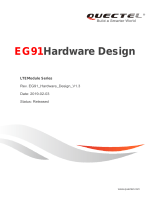
15/18
6 Do not use the product for medical equipment, medical equipment that re
quires a high degree of safety that affects human life, Space / aviation e
quipment, Disaster prevention / crime prevention equipment and other equ
ivalent equipment.
7 Do not use the product near people wearing medical electrical equipment.
There is a risk of medical equipment malfunction due to the influence of
radio waves.
8 Depending on the vehicle model, it may affect on-vehicle electronic device
s. When installing or wiring, install and wire as far away from the on-vehi
cle electronic devices as possible. When installing a GNSS antenna, install
it as far away as possible from the car navigation system and other ante
nnas. It may cause performance degradation.
9 Do not damage, break or process each cable.
If a heavy object is put on, heated, pulled, or bent forcibly, the cable may
be damaged, resulting in a fire or electric shock.
10 If foreign matter such as water or metal gets inside, first turn off the pow
er of this product, disconnect the power cable, and contact us. Using it as
it may cause fire, electric shock or malfunction.
11 When cleaning the surface, do not use organic solvents such as thinner or
benzine. It may cause damage to the paint on the surface. To clean the
surface, remove dust and dirt, and wipe with a clean cloth.
7.3 Notes on Equipment installation
1 Secure the product by passing the M6 bolts through the mounting holes o
n the product.
2 When handling this product, pay sufficient attention to static electricity. It
may break down due to static electricity. Be especially careful of static el
ectricity on the interface connector.
3 Do not use or leave the product in places with high direct sunlight or hig
h temperatures. It may cause overheating, deformation or failure of the eq
uipment.
4 Please install the main unit, antenna and cable so as not to interfere with
operation and operation of equipment such as airbags.
5 Please securely connect each cable to this product securely. It may cause
the cable to come off or damage the connector.
6 Do not install near devices that generate magnetic fields, such as high-vol
tage power transmission lines and transformers. The device may not work
properly.






















